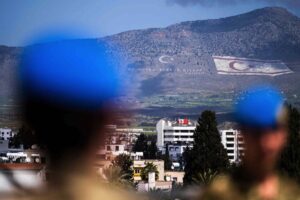A massive 8.8-magnitude earthquake that struck off the coast of Russia’s Kamchatka Peninsula early Wednesday morning has been identified as one of the strongest seismic events globally in the past century, triggering a Pacific-wide tsunami and renewed concerns over tectonic activity within the infamous “Ring of Fire.”
The undersea quake occurred at a depth of approximately 20 kilometres, around 126 kilometres from Petropavlovsk-Kamchatsky, the capital of the Kamchatka region in Russia’s Far East. The area lies squarely within the Pacific “Ring of Fire” – a geologically volatile zone characterised by frequent earthquakes and volcanic eruptions along tectonic plate boundaries.
According to Jonathan Paul, Professor of Geosciences at Royal Holloway, University of London, the Pacific “Ring of Fire” is one of the most tectonically active areas on Earth. “Such powerful shifts of the sea floor can displace vast volumes of water, producing tsunamis that radiate across the entire ocean,” he said.
Tsunami Alert and Volcanic Activity
Despite the strength of the earthquake, the resulting tsunami waves did not exceed five metres in height. Dr Athanasios Ganas, Director of Research at the Geodynamic Institute of Athens, explained that while the rupture zone was long — about 600 kilometres — the vertical displacement of the sea floor was highly concentrated. “We observed shifts of more than four metres, but only along a limited part of the fault line, which reduced the wave height,” Ganas noted.
The seismic disturbance has also activated the Klyuchevskoy volcano, located 450 kilometres north of the epicentre. Russian scientific agencies reported continuous eruptions of lava and ash since the quake.
Meanwhile, precautionary evacuations were carried out across Pacific coastlines, including the Galápagos Islands, Peru, Ecuador, Easter Island, and parts of Alaska, Japan, and the Philippines.
Understanding the ‘Ring of Fire’
The Pacific “Ring of Fire” stretches over 40,000 kilometres and includes 452 volcanoes. It accounts for 90% of the world’s earthquakes and over 80% of the largest ones. The Kamchatka region is particularly sensitive due to the subduction of the Pacific Plate beneath the North American Plate — a process that builds up immense seismic pressure over time.
Notably, this region has produced other major quakes, including the 9.0-magnitude earthquake of 1952 and several above 8.0 since then. “This latest event is a reminder of the persistent seismic threat posed by the Pacific’s tectonic dynamics,” said Australian geologist Chris Elders, speaking to Al Jazeera.
While Australia is not part of the Ring of Fire, nearby regions such as Indonesia and New Zealand are directly affected by the shifting plates.
As aftershocks continue and volcanic monitoring intensifies, scientists urge continued preparedness and regional cooperation to mitigate the risks of future megaquakes in the Pacific basin.












